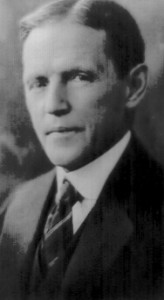Re-Training Vision: The Three Principles
The three principles of natural vision are movement, centralization, and relaxation.Relaxation is meant in a very broad sense. The more relaxed the mind, the more clear the vision. The student who develops nearsightedness or astigmatism under a heavy courseload is tired and stressed, not “reading too much.” It is fine to read or do close work like needlepoint for long periods of time, even in low light, as long as this does not produce eyestrain. Straining to see worsens the vision, both immediately and in the long term. Relaxation improves vision, and eyestrain is reduced over time by trusting that good eyesight is natural over a wide range of conditions.Centralization is a very interesting principle. The human eye is developed to see sharply in color and to see in very low light, two activities that are non-congruent. In order to function well in both areas, the central portion of the iris is adapted to sharp color vision, while the peripheral portion is activated in low light. Peripheral vision can detect motion quite well at all times, but it is not the portion of the eye that sees most clearly in normal light. In order to see clearly, it is important to see with the part of the eye that sees clearly. Instead of utilizing the entire visual field to “see everything at once,” the person with good vision moves her eyes constantly, mapping the area in front of her by looking at one thing at a time. This principle really goes back to the idea of relaxation, since it is a type of hypervigilance that creates the compulsion to try to see too much at once.The principle of centralization is obviously related to the principle of movement, but there are some implications to this principle that are not so obvious. Movement here is a broad term, related not only to eye movement but to blinking, moving the head, and changing the posture. It is unnatural for humans to sit stiffly or to stare without blinking, and this creates eyestrain and eventually fatigue. A relaxed posture contains movement. But proper eye movement also creates a condition that is anxiety provoking for some people: it creates the perception that objects known to be stationary are actually moving. Nearly everyone is unaware of this. People with normal vision need to have this demonstrated to them with special eye exercises. Interestingly, people with poor vision will usually compensate in order to not see the movement when doing the exercises. For these people, beginning to see “stationary” objects move while doing the exercises is a sign that they are relaxing into normal eye movement.What are the implications for inner vision? I have found that these principles carry over into other areas. It is important to be relaxed in order to see on the inner plane. It is no accident that people tend to have more visions before drifting off to sleep or while doing ordinary activities such as taking a shower. It is important to let go of the compulsion to understand everything at once and allow the vision to naturally unfold. Trying to see everything at once inhibits the inner vision as well as the outer. It is most important to develop a frame of mind which allows perceptions to occur even when a part of the brain disagrees. The mind can draw its own conclusions, but it does not need to protect itself from the information it gathers.



